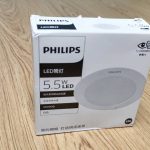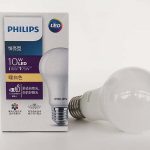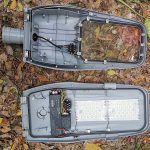Explain how to obtain better quality with a real example
As you know, it’s important for businesses to take product quality as one of their priorities.
It is the same for the quality of LED downlights.
Brands will try their best with product functions and features that users can see or feel directly.
But some parameters are not directly visible to regular users.
Do they still take them as their priorities?
Probably not.
LED downlights are one of the most commonly used lighting products.
There are many reputable brands in the market.
But this market can be highly competitive as well.
LED downlights look identical if only judged by their exterior appearance.
It can be difficult for regular users to pick the right one.
For this reason, brands may emphasize on those obvious quality features.
While ignore other less noticeable fundamental parameters.
Recently, we’ve got a sample similar to the case mentioned above.
We decide to use it as an example to explain what to look for when you are buying LED downlights.
Below is some basic information about this sample.
Specifications: 8W, 4,000K, 400 Lumens, DC 12V
1. First Thing to Consider Before You Buy
Usually, LED downlights are installed on the ceiling inside your home or office, etc.
You will need a ladder or chair in case you need to install or replace them.
This is not difficult, but not convenient.
For this reason, we’d say quality should be the first thing to consider when you buy LED downlights.
2. First Impression on Overall Design
The body of the LED downlight sample is made of aluminum.
It feels kind of heavy as the first impression (compared to the ones made from plastics).
Aluminum is an ideal material for efficient heat dissipation.
Heat dissipation is a critical factor that determines the life spans of LEDs.
- Especially for the type of recessed MR16 LED downlights.
- They are installed inside the holes on the ceiling.
- Air will not flow inside a sealed space.
- This is a common cause for some LED lights to fail within a sealed working environment.
Good heat dissipation is unquestionably helpful for a longer life span of such an application.
We can say this light bulb has a solid foundation for a long life span, thanks to its heat sink.
It is not trying to save on material costs.
So, we can say it has a foundation for good quality.
A good product will need an optimum amount of materials.
We’ve told you about our first impression on this LED downlight sample.
After the first impression, we are going to talk about 2 sides of this sample.
- The quality of its electronic hardware
- The quality of the light it produces
We use professional instruments to test this sample.
BackMorning does such tests using the same instruments for some other household names.
And we will explain each term in detail.
3. Voltage Range
We would like to talk a little bit about the working voltage range.
It’s essential to make sure the light will work properly at its designed voltage.
As for the LED downlight sample, it doesn’t flick within its applicable voltage AC 12V.
And it stays on constantly.
This result means it is good with this fundamental function.
4. Spectrum Test
In this part, we are going to talk about the quality of its light.
Will explain with data that we’ve got after testing it with an integrating sphere.
The performance of electronic products may go down to a certain extent as time goes by.
Therefore, we collect the data 2 times respectively.
- One is when the light goes on for 1 minute
- And the other is after 30 minutes
In this case, the data will be more reliable.
1). Total Lumen
The term Lumen is a common indicator for comparing the brightness of LED lights.
Lumen is a measure of the total quantity of visible light emitted by a source per unit of time.
Therefore, if you want a brighter light, then pick the one with a bigger Lumen value, rather than a bigger wattage value.
Here we can see that the sample produces:
- 359.2 Lumens at 1 minute, which is about 10.2% less than its rated value 400 Lumens
- 342.6 Lumens at 1 minute, which is about 14.35% less than its rated value 400 Lumens
As a common practice, the acceptable tolerance for a parameter is -/+10%.
This is a common standard among the top lighting brands.
But not mandatory for all the LED lighting manufacturers and sellers.
The tested values of this sample drop more than 10%.
That’s beyond the bottom line of tolerance.
2). LM/W
The lumen to watt ratio indicates the efficiency of the LED downlight.
It indicates how much light is output per Watt of electricity used.
It’s the same concept as how much horsepower a car produces with 1 liter of gas.
The higher the number is, the brighter it will be, compared at the same wattage.
And that means this light is more energy-efficient.
The package doesn’t indicate a rated value for its LM/W.
But we can calculate it by a formula:
- Rated Lumen / Rate Wattage (400 Lumens / 8 W) = 50.
However, the tested values that we got are
- 42.5 LM/W at 1 minute (18.75% less than the rated value).
- 43.8 at 30 minutes (12.4% less than the rated value).
Again, the acceptable tolerance is -/+10%.
This is a common standard among the top lighting brands.
But not mandatory for all the LED lighting manufacturers and sellers.
3). RA
This parameter measures the color rendering property of an LED light.
It is called General Color Rendering Index.
It measures the ability of a light source to reveal colors of objects in contrast to a natural light source.
- The parameter is measured from 0-100.
- A perfect 100 indicates that colors under the light source appear the same as they would under natural sunlight.
LED downlights are usually installed inside your home, offices, etc.
And even shopping malls, restaurants, fashion stores.
There are some cases when you may want to identify colors properly.
For this reason, the value of Ra is important for these applications.
- This sample indicate its value 85 on its package box.
- The tested values are 85.3 and 86.
They are quite good for regular applications.
4). SDCM
SDCM stands for Standard Deviation Color Matching.
The lower the number of SDCM, the smaller the color shift.
In plain English, that means how much an LED light looks different from another one.
It’s quite common to install multiple LED downlights on the same ceiling.
If their SDCM is too big, you will see one color for the first light.
And another color for the second light.
The sample doesn’t indicates this value on its sales package.
- But the tested SDCM value is 0.8, measured at 1 minute.
- And another value 1.7, measured at 30 minutes.
It will be an ideal choice if you need to install multiple LED downlights on the same ceiling.
5). CCT
For regular users, you can think about Correlated Color Temperature or CCT in a simplified way.
It is a way of measuring the color of a light source.
The higher the number, the cooler (bluer) the light looks.
A CCT of 2,700K is more yellowish than 5,000K which is more white.
- The rated CCT value of this LED light bulb is 4,000K.
- While the tested CCT value is 4,025 K, measured at 1 minute
- And 4,069 K, measured at 30 minutes
This value is within its acceptable tolerance.
6). Wattage
It’s preferable to have a comparatively lower wattage (when compared at the same Lumen).
It’s like a car uses less gas to produce the same horsepower.
- The rated value for this LED downlight sample is 8W
- The tested value is 8.4W, measured at 1 minute
- While the tested value is 7.8W, measured at 30 minutes
It indicates the wattage value properly on its sales package.
And you won’t make mistake if 8W is what you need.
5. Conclusion
1). Pro:
This LED downlight sample has great performance regarding the quality of light – Color rendering, uniformity, and color temperatures.
It has indicated its wattage quite accurately on its sales package as well.
2). Con:
The energy efficiency is below the bottom line of the commonly acceptable tolerance -/+10%.
And the percentage is not a small number.
Therefore, it’s incomparable to those global top-selling brands.
It’ll be a perfect downlight if they can improve its energy efficiency.
Last but not least, sometimes it can be tricky to properly determine the quality of LED downlights.
- Maybe most of the fundamental parameters are quite good.
- But one or two of them still need to improve.
We’ve explained some important points through a real example.
If you need our help with LED light quality subjects, feel free to contact us.
Will surely do our best for you.
Thanks for reading!
Related posts:
 9 Practical Buying Tips for LED Streetlights
9 Practical Buying Tips for LED Streetlights
 Spectrum Test for Philips LED Downlight DN190B 5.5W
Spectrum Test for Philips LED Downlight DN190B 5.5W
 LED Light Bulb Quality – Review on Philips E27 10w BPZ1000-930E27
LED Light Bulb Quality – Review on Philips E27 10w BPZ1000-930E27
 Test and Show High Quality Streetlight T12A-2 – Shape and Structure
Test and Show High Quality Streetlight T12A-2 – Shape and Structure
 Misunderstanding When Sourcing Backlite Panel Lights
Misunderstanding When Sourcing Backlite Panel Lights
 LED Strip Lights’ Quality, how to test in a professional way?
LED Strip Lights’ Quality, how to test in a professional way?





